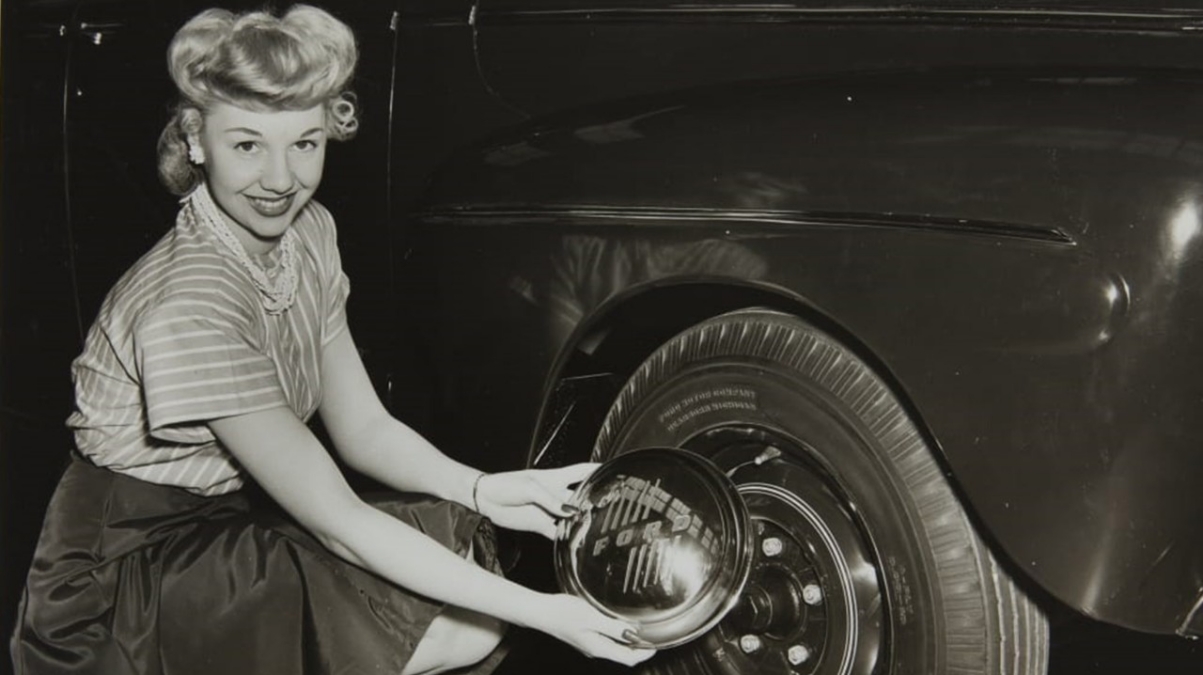At Ford Motor Company, we value diversity and embrace inclusion. Throughout our history we have partnered with great talent, many of whom are women, to help further these tenets. In fact, we have had female employees on our pay roll since our Company’s earliest years. Join us in celebrating the accomplishments of some of these inspiring women.
After outgrowing our original factory on Mack Avenue in 1904, Ford moved into the Piquette Avenue Plant in Detroit, Michigan. It was Ford Motor Company’s first purpose-built factory, and the birthplace of the Model T. Three years later, Georgia Boyer became the first woman to join the Ford Service Department, and in 1922, she was one of three female employees, alongside Edythe Bice and Marie Wirtz, selected to represent Ford Motor Company with the Good Will Delegation. This Delegation traveled to observe the reconstruction efforts by the American Committee for Devastated France following World War I.
In 1910, Ford relocated to our Highland Park Plant, where the moving assembly line for automobiles first operated in October of 1913. In January 1912, Blanche Furlong started working at Highland Park. The $5 a day wage was introduced in 1914 and by 1915, several hundred women worked in various departments of at Highland Park. By 1953, Furlong became the Ford Division General Sales Office Supervisor and the longest serving female employee at that time.
Not only were women working in Ford factories, but women also played a crucial role at dealerships. By 1922, Lillian Sheridan of Seattle, Washington was promoted to sales manageress at Hugh Baird’s Ford dealership. After 18 months on the job, Sheridan was convinced that other women could be successful as saleswomen, and she sold the idea “of a force of women selling Fords” to her manager. After hearing of Sheridan’s promotion, Henry Ford’s general secretary, E.G. Liebold, wrote her a letter of encouragement, saying, “There is no reason why women cannot develop to be as good sellers as men, and we are sure that you have shown considerable initiative in this direction.”
Also questioning the status quo was Henry Ford’s wife, Clara Ford. Clara was an outspoken advocate for women’s right to vote and was very active in suffrage movements in Michigan and nationally. She served as the Vice Chair of the Dearborn Branch of the Equal Suffrage League of Wayne County and was also active in the Michigan league of Women Voters. In 1921, she was appointed the “director at large” of the organization and would go on to serve in this position for at least ten years. Amid the Great Depression, Clara wrote a $3,000 check to the National League of Women Voters as a show of financial support to continue moving forward the conversation around women’s rights.
During the 1930s, Ford Motor Company was growing, and so was the impact of women in the workplace. Production began at Ford’s Dagenham Plant in England where the first Ford V-8 rolled off the assembly line, and Henry and Edsel Ford established the Ford Foundation. Also, during this decade, another woman was making national Ford vehicle sales history. Through the Howard Pore dealership in Kalamazoo, Michigan, Olive Parsons, sold 82 cars in 1939 alone making her one of the nation’s leaders in sales for that year.
The 1940s marked an extraordinary time for women in the workplace. In response to WWII, women began working in factories across the nation to support the war effort. As more women were joining the ranks at Ford, the Company established a Women’s Training Program for new hires in areas such as engine testing, assembly, machine operations and inspection.
That decade also gave us Rosie the Riveter, the woman in the iconic World War II poster exclaiming “We Can Do It,” who was based on Ford employee Rose Will Monroe. Monroe worked on the Willow Run assembly line building B-29 and B-24 “Liberator” military planes to aid in the war effort.
It wasn’t just on the assembly lines where Ford women were making a difference. Many other women entered formerly male dominated spaces in the 1940s, including the first draftswoman, Dolores Marsac who was hired at Ford’s Aircraft School. In 1943, Mary Von Mach was one of the first six women hired at the Willow Run Assembly Plant and holder of the first transport pilot license issued to a woman in Michigan. Jean Stommel was one of the first women hired in Ford’s chemical and metallurgical departments. She analyzed steel parts for tanks and anti-aircraft directors at Highland Park. And then there was Leota Carroll, the first woman designer hired at Ford.
The 1940s created many new opportunities for women with the necessity of their involvement in the labor force. Once the doors had been open on such a large scale, women continued to seek employment across departments at Ford. Cultivating this talent was an important step in creating an inclusive workplace for women to succeed. This trend continued in the decades that followed. Look for part two of Women of Ford to learn more about progress women made in the workplace during the mid- to late-twentieth century.

